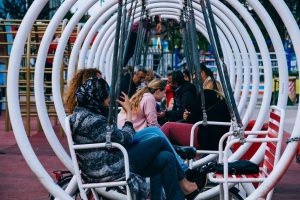In June 2017, I had the privilege of joining a group of 25 architects, urban planners, policy makers and activists on a learning journey to Copenhagen to explore how the world’s “most livable city,” has used public spaces to build community and promote equity.
Sponsored by the Robert Wood Johnson Foundation and led by the Gehl Institute, the trip was part of a research initiative to better understand how public spaces can make communities healthier and more welcoming for all. MMS Education provided planning and project support to the initiative.
Karabi Acharya leads RWJF’s program to identify culture of health models around the world, including Copenhagen. In “Dim the Lights – We Need to Listen and Learn Differently,” she wrote about the trip and about RWJF’s broader approach to learning: “We’re looking closely at the public spaces where we live, learn, play, and engage with others because we know they can create the physical and social conditions that are critical to creating healthier communities for all….The degree to which we feel connected to other people, to nature, and to the world is a major driver of our health, and it can have dramatic effects on health outcomes like stress levels and blood pressure.”
Stephanie Gidigbi, SPARCC Policy and Systems Change Director, participated in the Copenhagen learning journey and offers key insights in her blog “From Denmark to America: Three Lessons for Investing in the Health of People and Places,” which also links to a short video about the trip.
Ultimately, this work by RWJF and the Gehl Institute – along with others in the field and in communities – will help to broaden our understanding about how to achieve communities that are more inclusive and healthy for everyone.
Karen Ellis, Principal, MMS Education


